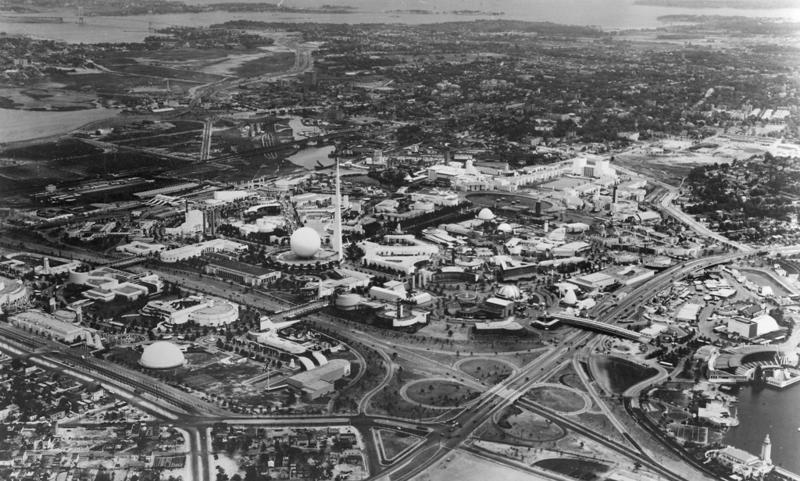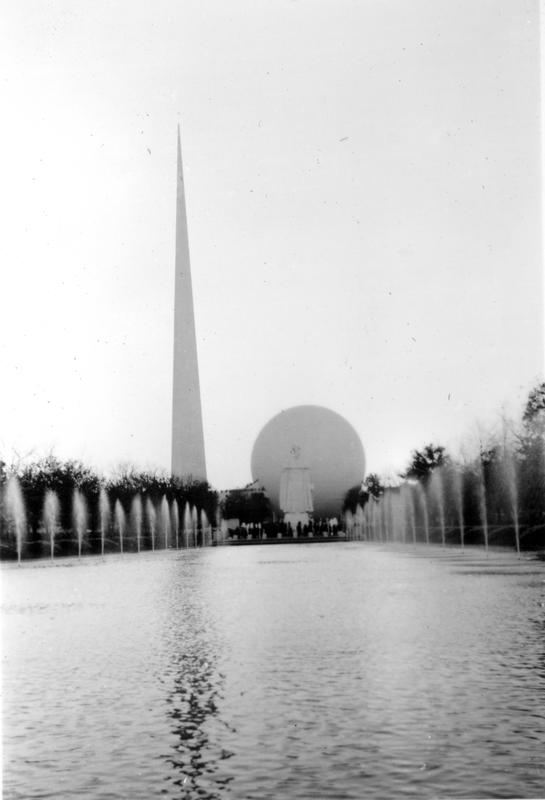 1939 World’s Fair. Photo Courtesy of NYC Parks Archives
1939 World’s Fair. Photo Courtesy of NYC Parks Archives
The exhibition planners of the 1939/1940 World’s Fair in New York City wanted it to be “the greatest international exposition in history.” The fair was attended by 60 nations, 33 states and U.S. territories, and over a thousand exhibitors, plus 45 million visitors over the course of its two seasons. It turned out to be the best-attended event of the first half of the 20th century, but it is often overshadowed by more recent memories of the 1964/1965 World’s Fair which we still see notable remnants of in the form of Philip Johnson’s New York State Pavilion, the Unisphere and other buildings still standing in Flushing Meadows-Corona Park.
Missing from the park today are the two distinctive structures that served as the symbols of the 1939 fair, a towering 610-foot Trylon and an imposing 200-foot Perisphere. Here we’ve compiled 10 interesting facts about those two long-gone icons.
10. You Could See Them from Midtown
 Photograph Courtesy of NYC Parks Archives
Photograph Courtesy of NYC Parks Archives
Standing at 610 feet tall, the pointy Trylon tower was the tallest structure at the fair and one of, if not the tallest building in Queens at the time. The Trylon and Perisphere were so tall that they could be seen all the way from midtown Manhattan and even parts of the Bronx! This worked out as a great marketing tool, as people who saw the structures from far away were intrigued to visit the fair and see them up close.





